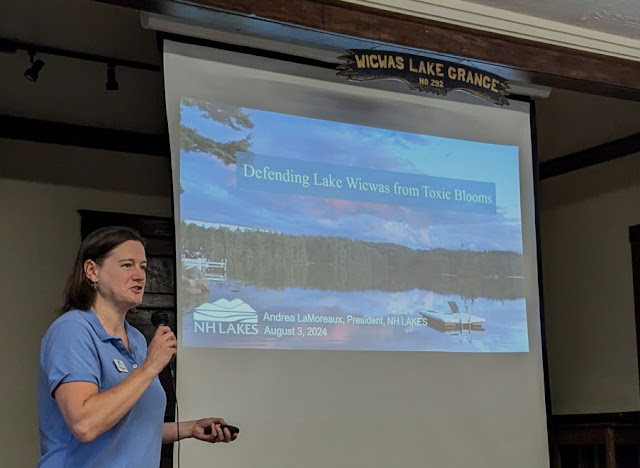The summer bounty of healthy plants thriving in a combination of hot sunny weather and plenty of rain makes a sound foundation for the food chain. It seems every patch of flowers has an insect or two taking in the nectar, including these Thread-waisted wasps which I see feeding on Black-eyed Susans.
 |
| Thread-waisted Wasp. |
It's pretty clear how this wasp got its name, and it's just amazing it can support that large lower abdomen with such a tiny connection. This wasp looks scary and it does sting, but not humans, and not to defend itself or its nest. It's a solitary species which doesn't build large nests like some other wasps. What it does sting is a caterpillar of another insect. Its venom kills the caterpillar and the wasp takes the dead caterpillar away, buries it, and lays an egg on the caterpillar. When the egg hatches, it will feed on the caterpillar, providing the wasp larva all the food it needs to grow and pupate into a mature wasp. Pretty clever. It seems every animal that has survived over the eons has evolved some unique trait that allows it to propagate its species.
Here's another insect I found in a bright colored flower.
 |
| A small bee spreads pollen from plant to plant. |
 |
| Ruby-throated hummingbird. |
Some of the early bloomers such as Evening Primrose, Black-eyed Susans, and Woodland Sunflowers have gone to seed here in the first days of August, and they are appreciated by goldfinches, sparrows, and other seed-consuming birds.
 |
| Goldfinch feasting on Woodland Sunflowers. |
Many fruiting trees and shrubs have already produced their bounty for the animals - blueberries and cherries for example; now it's time for black raspberries.
 |
| What these lack in size they make up for in sweetness. |
Like the blueberries and black cherries, the bears will be after these sweet treats. Unfortunately, bears will also search out human-sourced food wherever they find it. If you need a reminder to take down birdfeeders and not leave trash outside, take a look at this large bear that was ransacking yards on Loon Point Road this week.
 |
| (Specific location and photographer redacted!) |
We continue to have an abundance of loons on the lake and they were again flocked together one morning, this time an asylum of seven.
 |
| An asylum of seven. |
At one point the Harris Cove pair performed a synchronized swimming routine to display bands on both participants to ensure I knew what team they played for.
 |
| Team Harris was among the asylum. |
Orange over yellow is the male, blue over green is the female.
🏅🏅🏅
Yesterday the Lake Wicwas Association held its annual meeting and as always, the best part was catching up with all our lake friends, some of whom we may see only once a year at this very moment. In additional to hearing an informative, if somewhat concerning report on cyanobacteria from NH Lakes President Andrea LaMoreaux, we also heard reports on the current state of the lake's water quality, aquatic plants, and loons.
 |
| Andrea LaMoreaux presents at the Lake Wicwas Association annual meeting at the Wicws Grange. |
The association also recognized Paul Trombi for his 15 years of leadership for our Lake Host program! Thank you Paul, and everyone who supports the program and who attended yesterday's meeting. Overall, Lake Wicwas is in good condition and with your careful stewardship, Wicwas = and all our precious lakes - will continue to be resilient resources for wasps, birds, and bears, as well as humans.


Perfect
ReplyDelete